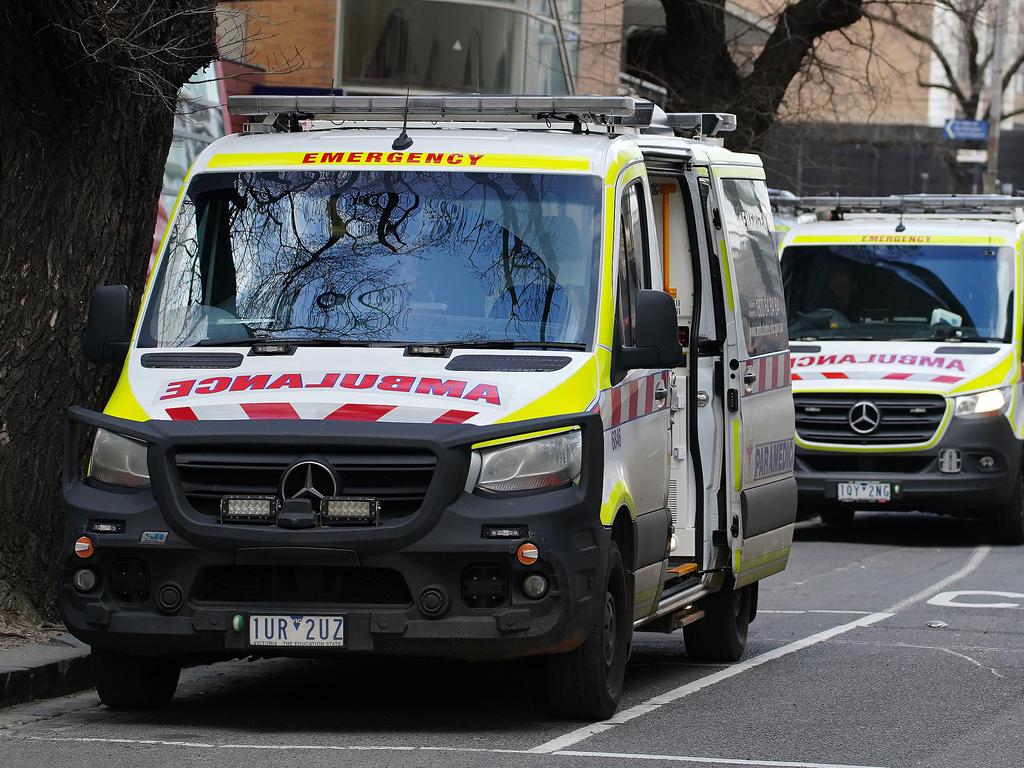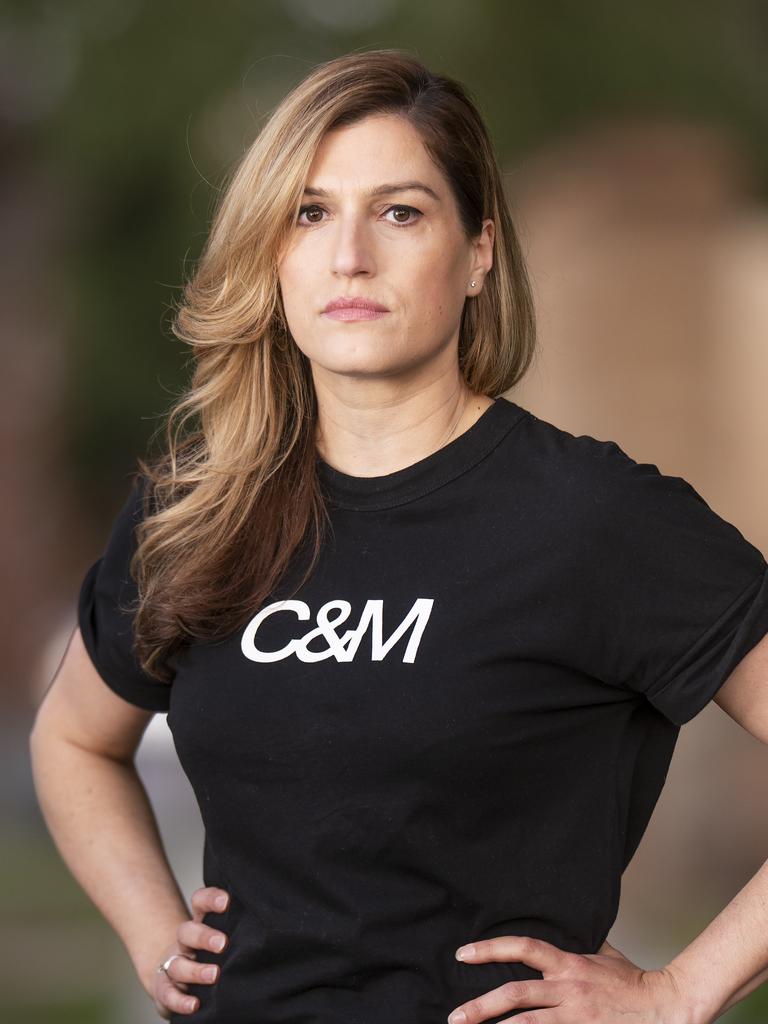Triple-0 was a victim of its own success until a perfect storm left patients dead
One fateful day during Melbourne’s sixth lockdown the pressure valve at ESTA blew — five people died and three quarters of calls weren’t answered in time.
Victoria’s triple-0 call-taking service was under siege during the pandemic when ambulance calls skyrocketed, and delays were a factor in 33 deaths.
A special Sunday Herald Sun report traces the origins of the crisis, and reveals the political fallout from a damning watchdog report released last weekend.
The origins of a crisis
In 2015, the fledgling Andrews Government commissioned a secret report into funding woes at the state’s triple-0 operator.
The Emergency Services Telecommunications Authority had issued warnings that it was “spending more than it was getting” and a structural deficit worth tens of millions of dollars was growing.
Then-emergency services minister, the late Jane Garrett, asked consultants at Deloitte to check the ESTA board’s figures.
Their dire prediction was eerily similar.
By the following year, Deloitte said there would be a $27m deficit, reaching $39 million by 2021.

“ESTA has stated that they have raised the issue of the underlying deficit with key stakeholders over the past five years,” the Deloitte report – which was never made public – says.
Last week, Inspector-General for Emergency Management, Tony Pearce, released a scathing review of the ESTA’s call-taking delays during the pandemic, which may have contributed to 33 deaths.
He took aim at the long-term funding problem, unresolved almost a decade after it emerged, as “unsustainable”.
“This situation also prevents ESTA from undertaking long-term planning in relation to its recruitment pipeline and improving its service delivery through technological advancements to benefit the Victorian community,” the report says.
Insiders say the ESTA may historically have been a victim of its own success.


It usually met targets for ambulance, police and fire rescue calls, outside of the occasional some surge events such as major bushfires and thunderstorm asthma.
Messages of a bigger problem didn’t cut through to those in power.
Governments of “both colours” addressed funding shortfalls with annual “top up” grants.
In effect, good work done by call takers meant a looming crisis was averted.
Until it wasn’t.
During the early months of the pandemic, concerns grew about the capacity of the health system – including ambulance services – to meet demand.
Despite this, Pearce’s report shows there was no crisis funding established.
“ (ESTA) missed an opportunity to seek urgent funding from the Victorian Government in early- to mid-2020, in order to commence the recruitment pipeline for additional operational staff in anticipation of increasing triple-0 demand,” it says.
In other states money was sought, and in NSW the government admitted to an “overspend”.
But as Pearce said in the days after he released his report, “had NSW and Queensland done nothing but simply stick to a business-as-usual model, they would have been in the same situation as Victoria”.
That situation was that calls went unanswered once lockdowns ended and Delta and Omicron waves smashed the state.
Between December 2020 and May 2022, there were 40 emergencies with “adverse events” due to call delays or ambulance dispatch issues.
Of those incidents, 33 patients died.
Eleven deaths came in one month.
The day five people died
On October 6, 2021, all hell broke loose.
Pressure had been building in the ESTA engine room and was about to blow.
Melbourne was in its sixth lockdown, but thousands of coronavirus infections were emerging every week.
Ambulances received an average 2784 calls a day – and it took a toll.
On October 6, almost 75 per cent of calls weren’t answered in time.
Five people died on that fateful day, as delays crippled the system.
Pearce says the daily peaks in October often “required up to five times the number of call-takers ESTA could roster”.
Telstra triple-0 service operators, who patch calls to the ESTA before they are sent on to fire, police or ambulance services, were also feeling it.
Victoria’s crisis meant Telstra operators were on hold waiting for the ESTA, with fears it could trigger a nationwide crisis.
Pearce points out that unprecedented demand in other states hadn’t caused a meltdown like at the ESTA “despite both New South Wales and Queensland generally having daily emergency ambulance call activity … even during periods of surge”.
His report also highlights concerns about the structure of the authority, which has a board and chief executive but hadn’t been part of a department.
“Had there been stronger relationships and engagement between ESTA, the broader emergency management sector and government, it may have been able to raise and escalate the criticality of this risk,” he writes.
Government insiders also say there is a reason chief executive Marty Smyth resigned in October, 2021 – the month that the system started to really buckle.
They say once former police assistant commissioner Stephen Leane took over the full scale of the crisis was laid bare and emergency funding was implemented.
Altering the ESTA’s chain of command was also recommended by former police commissioner Graham Ashton, who reviewed the structure of the ESTA this year.
He said multiple ministers oversaw different emergency services which “at times created competing priorities”.
Multiple unions are also involved, advocating for different outcomes, with call takers in different crews – fire, ambulance, and police – meaning there is a lack of flexibility to switch between services.
Different skills are required for ambulance call-outs, which include waiting on the phone until paramedics arrive, with most other call takers not trained to assist during surges.
One insider said a joke within the service was that if it wasn’t bushfire season, fire services call takers “bring their knitting to shifts”.
A new Memorandum of Understanding between ESOs sought to address this during the pandemic, while recent government funding – provided after the crisis began – is aimed at building a multiskilled workforce.
Premier missing in action
Daniel Andrews took three days to emerge following the release of Pearce’s report, leaving ministers to apologise on behalf of the government.
When he did front the media he said the pandemic made it impossible to foresee the problems that emerged – leading to a rebuke from unions and Pearce.
Some observers were angered that despite years of warnings, the premier said the government owed it to victims “with a sense of urgency to get on and make any and all changes and reforms we can”.
“It’s seven years since they were told (about funding issues). The previous government was also told. It wasn’t driven by politics,” one source said.
Former chair of the ESTA, Roger Leeming, who was appointed to the board by the Brumby government, was approached about when warnings were provided and confirmed there had been clear messages sent in 2015 – shortly before he was told his services were no longer required.
The government’s decision to release its response to the IGEM report on a Saturday, with only an hour given to some media to attend the event, also triggered anger.
Government insiders say the decision was made because emergency services minister Jaclyn Symes had promised not to release the report on a Friday – when bad news is often buried.
The premier confirmed the government had the report for a month before its release, but blamed changes made to the final copy.
Those changes, according to Pearce, were a couple of typos.
The government’s delays and spin fed perceptions that it was making excuses and avoiding responsibility.
For some families of victims it wouldn’t have mattered if Andrews had been here on Saturday, Sunday, and Monday.
Dave Edwards, whose father died after collapsing in Swan Hill, with repeated attempts to get through to ESTA by the family failing, explained why.
“The fact that I stood there trying to get help, and I couldn’t get it, and my father died on the front lawn, there’s nothing they can do or say to make me feel better.”
More Coverage
Originally published as Triple-0 was a victim of its own success until a perfect storm left patients dead





